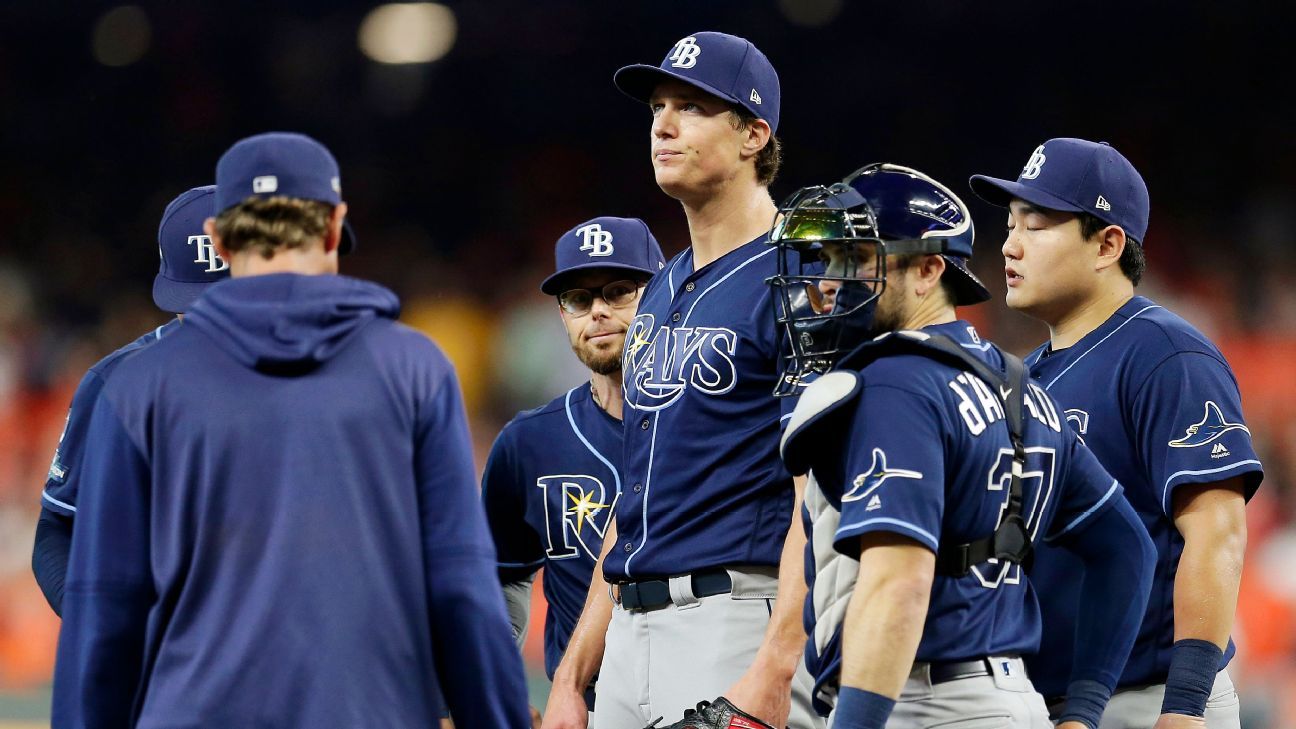Sources: MLB to vote on rules changes Friday - 4 minutes read

The Major League Baseball competition committee is set to vote Friday on rule changes that would begin in 2023 and include a first-ever pitch clock, the elimination of the shift, bigger bases and a limit to how many times a pitcher can disengage from the rubber, according to sources familiar with the situation.
The goal is to increase action on the field, quicken the pace and reduce the amount of time it takes to play a major league game. The rule changes are expected to pass and include the following:
A 15-second pitch clock with the bases empty and a 20-second clock with runners on
Two disengagements from the rubber -- including pickoff attempts -- per plate appearance
A requirement by hitters to be in the batter's box and "alert" with eight seconds to go on the clock. Hitters are allowed one timeout per plate appearance
Only two infielders will be allowed on each side of second base, with all four required to be on the dirt (or inner grass)
Infielders cannot position themselves on the outfield grass before the pitch is thrown
Bases will increase in size from 15 inches squared to 18
Major League Baseball is reacting to extensive research it has done through fan and player surveys over the past several years while testing the changes at all levels of the minor leagues. With technological advancements for pitching and defense over the past decade, the league anticipates the changes are a way of evening the playing field for hitters while making a more entertaining defensive product.
Pitch clock
The clock will start when the pitcher receives the ball from his catcher or the umpire -- and play is ready to resume. Most of the time, that's after every pitch but might include a moment for a runner to return to a bag or a ball boy or ball girl to clear the playing field, for example. Umpires will have a buzzer on them to indicate the pitch clock has expired, leading to a ball being called. If hitters aren't ready with eight seconds remaining on the clock, a strike will be issued. Each hitter will be allowed one timeout per plate appearance. Mound visits are limited to 30 seconds unless due to injury.
Rubber disengagements
Pitchers can step off the rubber twice per plate appearance without penalty, but after a third step-off -- which does not result in a pickoff -- a balk will be called. In other words, a pitcher can throw over to first base up to three times, but the third attempt must lead to an out or the runner gets to advance a base. The disengagement rule resets when a runner gets to a new base. With no runners, a third step-off would result in a mound visit.
The shift
Umpires will monitor infielders to make sure they are properly aligned before the ball leaves a pitcher's hand. Like receivers in a football game, infielders can ask umpires if they are properly situated, with two infielders required on each side of second and none allowed on the outfield grass. If a pitch is thrown while the defending team is in violation of the new shift rules, the hitting team can choose the outcome of the ensuing play or a ball for the hitter. This is the one play of the new rules that would be reviewable. Infielders cannot switch positions within an inning unless one of them is replaced.
Bigger bases
The increase in the size of the bases should reduce injuries around them while increasing stolen base attempts. Both outcomes occurred in the minors when the bigger bases were tested.
ESPN's Jeff Passan contributed to this report.
Source: ESPN
Powered by NewsAPI.org